Japanese Corporate Transition in Time and Space
Japanese Corporate Transition in Time and Space
Tomoko Kurihara


JAPANESE CORPORATE TRANSITION IN TIME AND SPACE
Copyright Tomoko Kurihara, 2009.
Nicolas Roope, Antirom, RGB Show, OneDotZero Festival, ICA, London, May 1999.
Seken, , reprinted by kind permission of Blackwell Publishing from The Blackwell Encyclopedia of Sociology, ed. George Ritzer, vol. VIII, pp. 41547. Blackwell Publishing Ltd 2007.
All rights reserved.
First published in 2009 by
PALGRAVE MACMILLAN
in the United Statesa division of St. Martins Press LLC, 175 Fifth Avenue, New York, NY 10010.
Where this book is distributed in the UK, Europe and the rest of the world, this is by Palgrave Macmillan, a division of Macmillan Publishers Limited, registered in England, company number 785998, of Houndmills, Basingstoke, Hampshire RG21 6XS.
Palgrave Macmillan is the global academic imprint of the above companies and has companies and representatives throughout the world.
Palgrave and Macmillan are registered trademarks in the United States, the United Kingdom, Europe and other countries.
ISBN: 9781403966544
Library of Congress Cataloging-in-Publication Data
Kurihara, Tomoko.
Japanese corporate transition in time and space / Tomoko Kurihara.
p. cm.
Includes bibliographical references and index.
ISBN-13: 9781403966544 (alk. paper)
ISBN-10: 1403966540 (alk. paper)
1. Corporate cultureJapan. 2. Organizational behaviorJapan. I. Title.
HD58.7.K88 2009
302.350952dc22 2008055686
A catalogue record of the book is available from the British Library.
Design by Newgen Imaging Systems (P) Ltd., Chennai, India.
First edition: September 2009
10 9 8 7 6 5 4 3 2 1
Printed in the United States of America.
For Emiko and Nobuhiro Kurihara,
Kurihara Nobuko and Etsuhiro,
Yuasa Kimiko and Kunio in memoria,
and Nvine Z. Davies
You see, but you do not observe. The distinction is clear.
A. Conan Doyle
Beauty is truth, truth beauty,that is all
J. Keats
Plates and Tables
Plates
1. Personnel Department, January 1998 (pre-renovation floor plan/ seating order)
2. Personnel Department, January 1999 (post-renovation floor plan/ seating order)
3. The Overseas Department, June 1998 (floor plan)
4. Seating Arrangements at an Office Party: Variations to hierarchy in different settings
Tables
1. Summary of Differences between Clerical and Career Tracks
2. Official Order of Hierarchy: Status Determined by Age
Note on Transliteration and Translation
Isolated words and phrases in Japanese appear romanized following the revised Hepburn system. In addition, in relation to single words and short phrases, the Japanese script in kanji and hiragana are given in the main text if presence of the characters significantly enhances the understanding of the argument. Longer phrases, usually quotations from interviews, conversations, or text, are translated in English followed by the original in Japanese or vice versa. In this instance, no transliteration is provided. The Japanese has been retained as it is essential to convey the linguistic knowledge that forms the core of this book. All translations are mine unless otherwise stated.
Acknowledgments
This book could not have been completed without the generosity of many individuals. I was touched by and remain grateful to everyone I have encountered on this journey. Foremost, I wish to thank the managers of the personnel and overseas departments and board of directors at JCars who allowed me access to study their organization for my PhD dissertation. My internship entailed a monthly salary of 80,000, and daily travel expenses, and further costs incurred upon visiting other field-work related sites were supplemented. I should note that my writing is not in any way constrained or shaped by this financial support (all interns at JCars are salaried during placements). I thank all the employees at JCars who interrupted their work to respond generously and in depth to my repetitive and persistent inquiries; those who of fered their f riendship to me; and for sharing with me their environment wherein I felt free to participate. I regret that maintaining their anonymity prevents me from naming them personally. The use of pseudonyms is an ethical requirement to the practice of ethnography and in my writing I have protected the identity of JCars and the identity of individual workers. For this reason I have chosen not to include photographs in this book.
I thank Jonathan Watts, for arranging my fieldwork at his Tokyo office. I also thank his colleagues who endured my inquisitiveness during this time. I thank Yoshida Tomoko at Kei University who kindly discussed returnee issues with me. I am also grateful to the returnees who via email and interviews took part in my study during the initial months of my fieldwork.
University who kindly discussed returnee issues with me. I am also grateful to the returnees who via email and interviews took part in my study during the initial months of my fieldwork.
I wish to thank members of my family for their ongoing care, advice, and encouragement while I pursue my projects: mum and dad, Emiko and Nobuhiro Kurihara. My love of literature, autumnal leaves, and observing people, in fact, everything I think of as uniquely mine comes from you. Thank you for being my wonderful parents. My sister Utako Oyamada, and Bess-chan for keeping me in good humor. My sweet grandparents, Kurihara Nobuko and Etsuhiro. Inma Hiroko, Fujio, and family. The Motoike family. I am far away but my heart is close.
.
Writing was supported by the Economic and Social Research Council Postdoctoral Fellowship award (# T026271269). I thank Don Slater, Sociology, London School of Economics for hosting and mentoring me during this fellowship.
My four-year divagation from this book during my postdoctoral research posts at Cambridge University proved informative to my thinking: my admiration goes to Mia Gray, geography department, for her brilliance, generosity, and friendship (EU-funded project under the Information Society Technology Programme [RISESI IST-200133189]). I thank Brendan Burchell and David Good in the Faculty of Social and Political Sciences (study of distributed organizations funded by Cambridge-MIT Institute). It was a pleasure working with you all. I also wish to thank John Swenson-Wright, Faculty of Oriental Studies, for his exacting criticism on a draft of my manuscript.
At the School of Oriental and African Studies, London University, I wish to thank my remarkable thesis advisors Nancy Lindisfarne, Lola Martinez, and Kit Davis for their advice and guidance. I thank Harumi Befu at Kyoto Bunky? University for his advice during my fieldwork. I thank Louella Matsunaga at Oxford Brookes University and Danny Miller at University College, London for their advice to take my thesis to publication. I am grateful to the two anonymous referees who provided useful comments on my original manuscript. Finally, I thank my editors Toby Wahl and Asa Johnson at Palgrave Macmillan for their support.
CHAPTER 1
Knowledge and Competing Discourses in Organizations
JCars in Context
JCars. A transnational corporation in Osaka, Japan. The corporate Public Relations brochure is 34 pages, printed on high-quality, A4-sized paper. It is at once a product and mode of social interaction. The front cover is dusted with metallic effect. Underneath swirls a gradation of blue hues from intense to light aquamarine. Photographic images take center-stage while blocks of concise text are interspersed on every other page. Together they outline JCars corporate history, philosophy, organization, strategy, and future orientation in relation to the global marketplace.
Next page
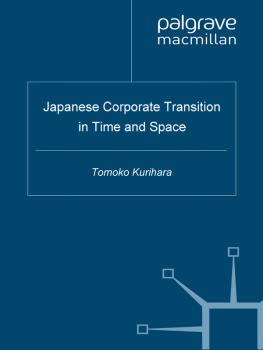

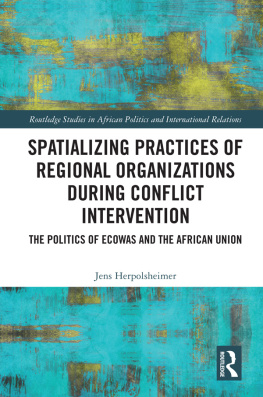
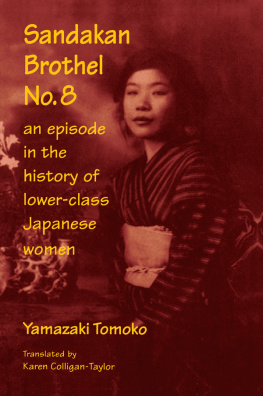
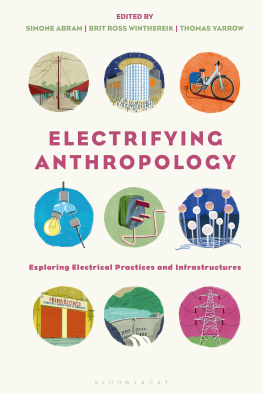
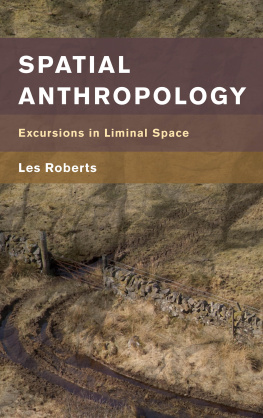



 University who kindly discussed returnee issues with me. I am also grateful to the returnees who via email and interviews took part in my study during the initial months of my fieldwork.
University who kindly discussed returnee issues with me. I am also grateful to the returnees who via email and interviews took part in my study during the initial months of my fieldwork.